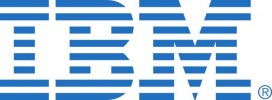Reduce Your Environmental Impact: Recycle and Repurpose Your IT Assets 15 Apr 2021
Electrical waste can be extremely harmful, and as we traverse through a technologically driven age, we can see much more year on year. We need to be more responsible for the disposal of toxic electronic waste if we want to protect our planet’s future.
Do you know exactly how e-waste damages our planet and destroys our limited resources? Not many people do, and we need to tackle this lack of information if we are to see the much-needed change in our homes and our businesses.
Please keep reading to learn more about toxic electrical waste and how we can reduce our adverse environmental impact. We have also included some top advice on how to protect your company’s data when disposing of old technology.
Harmful Electrical Waste: The Impact
Electrical waste can harm both our health and the health of our planet. If individuals and companies do not take more responsibility for toxic electrical waste disposal, then the effects can be irreversible.
Most electrical waste contains heavy metals and other materials that are hazardous to human health. Even everyday household electrical products which we throw away can contain metals such as cadmium, chromium, cobalt, lead and mercury. When people come into direct contact with these toxic chemicals, they risk developing neurological and physical conditions. If people dispose of electrical waste in inappropriate places, nearby water sources can become contaminated, eventually coming back into contact with humans. Conditions people can develop from using contaminated water include Parkinson’s disease, cancer and muscular dystrophy.
Electrical waste is also harmful to plant life. Contaminated water will destroy the ecosystems which it flows through, killing plants – including those farmed for human consumption. If most plants die at once in one ecosystem, it can prevent the ecosystem from supporting any plant life in the future. As a result, animals who rely on the food must move, disrupting the natural environment and potentially shortening animals’ lives.
When animals come into direct contact with contaminated water via their drinking source, they, too, will be adversely affected. In the worst-case scenarios, their sickness can cause loss of life. If they eat polluted plants, they can become sick too. Not only does this affect the health of the animal, but it can also affect humans too. If a contaminated water source strikes livestock and poultry, our food resources may suffer shortages. We are at even more of a risk if we eat contaminated food like fish as these contain high levels of mercury. Water contaminated by toxic electrical waste can affect all aspects of plant and animal life, including causing irreversible harm to humans.
Electrical Waste is Serious
People need to realise that the effects of toxic electrical waste are not a possibility of the future but rather a part of today’s reality. We need to be changing the way we dispose of electronics if we are to reduce the harmful impact on the environment and protect our planet’s future (and human health).
Businesses can help implement a positive change now; by designating an employee to oversee the disposal of all electronics, your business will have a better understanding of the impact your electrical waste is having on the environment. Help them create a recycling and disposal plan which can be shared with other employees. This will help reduce the amount of improper disposal and direct waste to appropriate recycling sources. Make clear signs directing employees where to store their old technology when it is finished, as well as what not to do. It is paramount that IT assets are not brought home and disposed of in your standard refugee collection. Not only will this put your business’s data protection at risk, but your retried assets will end up straight on landfill, polluting the water surrounding this area.
Read up on the regulations around electronic disposals on your local council website or the UK government website. Regulations are easy to understand once read through, and after some planning and revision, disposing of your electronic waste will be as easy as organising plastic and paper recycling.
Protect Your Data Before Recycling
As we have previously mentioned, ensuring your secure data is no longer on your IT assets when you look to retire their use. Some companies tend to overlook the trace of company data still present when disposing and recycling old electronic technology. Reinstalling operating systems, formatting the hard drive or deleting specific files doesn’t remove this data forever. People can still be accessible with freely available tools by anyone who buys your old technology or takes it from recycling plants.
Standard methods of deleting data only remove the directory reference to the data, so it’s no longer visible – this is why you can still often recover them from the ‘recycle bin’. When you want your data to be removed for good (especially if it contains sensitive information about the company, employees or clients), you need to use WipeDrive.
Global EMEA is proud to partner with WhiteCanyon and their WipeDrive software, which can ensure your data is completely erased and unrecoverable, to 100% guarantee. WipeDrive uses military-grade, wiping technology that overwrites your data multiple times using Department-of-Defense-approved wipe patterns to ensure your data is completely unrecoverable.
Please take a look at our website to learn more about Global EMEA and the fantastic benefits of WipeDrive. By ensuring your data is secure and erased from retired electronic devices, you can recycle and dispose of them appropriately and confidently. All your client information, company secrets and sensitive information will be protected from prying eyes. Contact us today on 0345 340 3105 or fill out the enquiry form on our website here.








